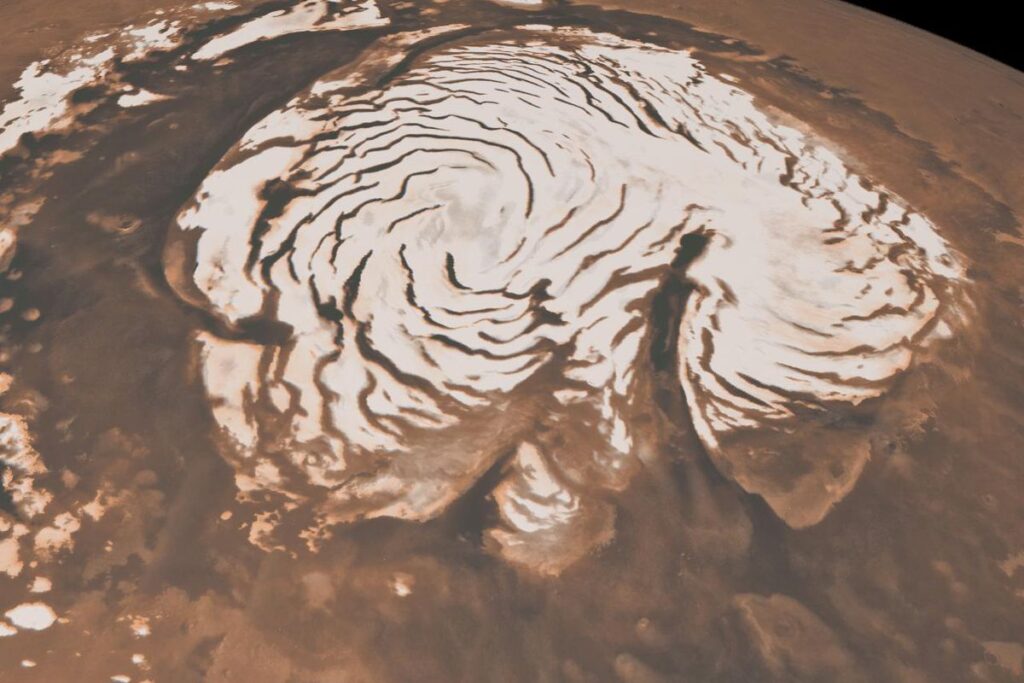Mars is weird, really!
It snows on Mars every single night. Scientists have recently discovered evidence suggesting that snowstorms are a nightly feature on the planet. While evidence of ice/water vapor in the clouds floating about in the Martian atmosphere has been available for a while, this is the first time scientists have discovered snowfall.
Details about the discovery of this incredible phenomenon were published in the Nature Geoscience recently. Outlining the process, the study claims that nightly flip-flops in the Martian atmosphere are responsible for the production of water snow and stormy winter on the plane. The discovery is the result of a research carried out by planetary scientists at the National Center for Scientific Research, Paris, (CNRS) in collaboration with NASA, which provided supportive data on the matter.
Wispy cloud like formations, like the virga streaks found on Earth, was spotted in Mars’ atmosphere in the images captured by NASA’s Phoenix lander in 2008. In Earth’s atmosphere, Virga refers to cloud precipitation that evaporates before reaching the surface. Back then too, scientists had theorized the possibility that images captured by the Phoenix lander were actually of snow storm made up of water ice.
Evidence of snow on Mars was once again made available by NASA’s Mars Reconnaissance Orbiter in 2012. However, it was later determined that these snowflakes were largely made up of dry ice (carbon dioxide).
So far, the scientific community was convinced that the ice/water particles found on Mars and in its atmosphere lacked the convective motion needed to produce snow. However, the research team at CNRS was able to model convective snowstorms, localized in nature, at the time of deep nightly mixing in the atmosphere.
This localized cooling of atmosphere creates convective plumes of cold air on top of warmer air. As the warmer air rises and cool air sinks, strong atmospheric currents are formed. Thus, microbursts of snow form and eventually fall on Mars’ surface. This is basically saying that the same process of adiabatic cooling which causes rain and snow to fall on Earth occurs on Mars too.
This model could be further developed to revisit the history of Martian atmosphere and understand the role of water on the planet. This could allow scientists to develop a better understanding of the water cycle of Mars and explore the possibility of human colonization of the planet becoming a reality.


